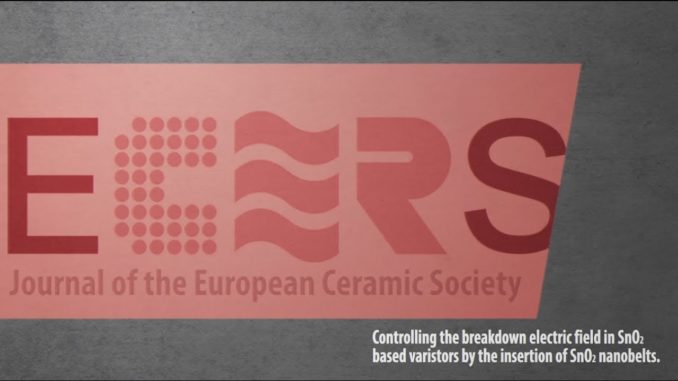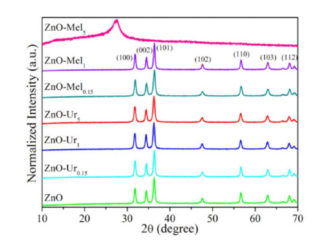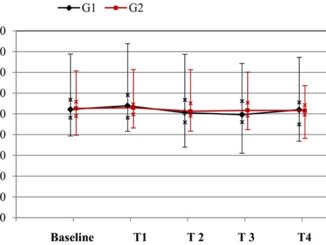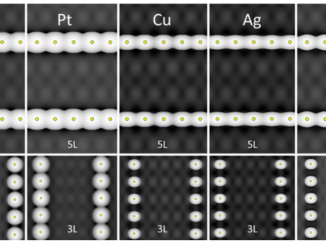
Controlling the breakdown electric field in SnO2 based varistors by the insertion of SnO2 nanobelts
Abstract: Semiconducting metal oxides have many practical applications, including varistors. Varistors based on SnO2 exhibit both high nonlinear coefficients and high breakdown electric fields. In this work we present a facile means for controlling the breakdown electric field in the SnO2-CoO-Cr2O3-Nb2O5 varistor system by the introduction of 1D SnO2 nanobelts. The materials were prepared by a solid state reaction method with Nb2O5 doping levels at 0.10 and 0.20, mole percent. The materials were studied in detail by dual beam microscopy, direct current and impedance measurements. Exaggerated three-dimensional growth of the tin dioxide belts was observed, which was attributed to Ostwald ripening. The breakdown electric field was observed to decrease from 2510 V/cm to 2280 V/cm and from 1700 V/cm to 804 V/cm after nanobelt insertion, into the systems with 0.10 and 0.20, mole percent Nb2O5 respectively. A model for the observed results was proposed based on the percolation of electrons through the belts, decreasing the number of effective potential barriers at the grain boundaries. The simulations of the impedance data showed one order of magnitude decrease in the grain boundary resistance due to the nanobelt insertion for both studied systems.
Authors: Mateus G. Masteghin, José A.Varela, Marcelo O. Orlandi
Journal of the European Ceramic Society
Volume 37, Issue 4, April 2017, Pages 1535-1540
DOI: https://doi.org/10.1016/j.jeurceramsoc.2016.12.018




